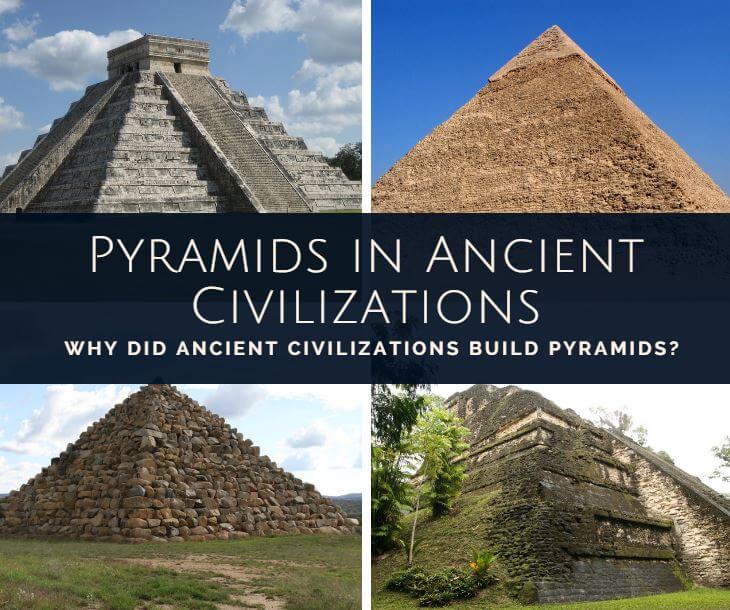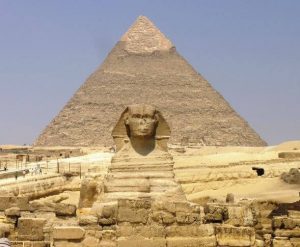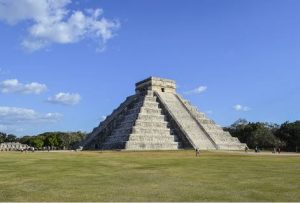The Bible has again and again been derided as a collection of mythological tales. However, within its lines there are epic stories full of fantasy; impossible to resist them. One of the most famous, is located in the book of Genesis, the story of the Tower of Babel. The text aims to explain why humanity has different languages. According to this, a group of people – belonging to the generations after the great flood – decided to construct a building that reached to the sky. God felt threatened by their determination and so, decided to complicate their communication, giving them different languages and spreading them around the world; destroying their construction and the union of the human race.
Such a tower never existed, but the history has been connected with different constructions of ancient cultures, that had a function similar to the pyramids in other civilizations.
Inhabitants of Ancient Egypt, China, Pre-Inca, Inca, Aztec, Maya and many other ancient cultures built pyramids that still exist today.

Ancient civilizations and Pyramids
Pyramids continue to occupy a place in contemporary minds. It is shocking to see them in photographs or in person. Not just thinking about how they were built, but also the structural perfection they have maintained for hundreds of years. There are different versions: from the first constructions in Mesopotamia, Egypt, Mesoamerica, China, Spain, Nigeria, Sudan and even in India. They all have a different meaning, and although they are far from looking like the Tower of Babel, they do have some overlap.
When talking about this type of building, the way the architecture speaks of a civilization is most commonly mentioned. Building pyramids in any of these cultures meant to demonstrate intellectual and social power. If a foreigner were visiting the cities in which these pyramids were built, he would feel an unknown force that it would remind him of big mountains; figures that were related to gods and benefits for humanity for a long time.
According to various historians, the designs of the pyramids did not come from their imagination, they were a human attempt to simulate the fullness and grandeur of the mountains and volcanoes surrounding them. Due to their being food in in the sides of mountains for some time, it was thought that on top there was a stronger connection with the entities that sent rain, sun, storms, and even volcanic eruptions. Thus, the pyramids became part of the cities and although visually represent prosperity, civilizations gave them multiple meanings.

Ancient Egyptians created them to serve as tombs for the great pharaohs and they were designed based on structures called mastabas (primitive ritual pyramids), that were built by putting stones in an ascending sequence. Those that were built in Mesoamerica (including Mexico) were ceremonial centers dedicated to the gods. Having an almost heavenly connection thanks to the height connected the priests with the gods, or at least they thought. The same thing happened in India and China.
The pyramidal shape was not conceived as perfect; It was just the easiest way of creating buildings. When it was noticed that the technique could come closer to heaven, they began to perfect it. The architectural benefits were an accident. The triangular shape allows better airflow, rain glided into nearby canals, as well as served as excellent points of reference for any visitor.
Their majesty has survived wars, showing that since forgotten times, mankind has found ways to be their own God. Contrasting with superficial modern minds who ensure that their creation required the help of aliens, they have even dared to say that they are tied to perfection with some celestial bodies, which makes them supernatural works. Such statements are absolutely false and only overshadow the human achievement and ingenuity that was required to create these structures.
Why did ancient civilizations build pyramids?
The pyramids are symbols of achievements of various civilizations. Their designs similar to the mountains do not demonstrate the existence of a God on humanity, but that we can create majestic and complicated works.
Someday those figures will disappear and the mountains will be transformed, but we will have found new ways to leave a permanent mark of human divinity.
Why are larger ones similar in size?
Because that size is that which can be achieved during the life of a king or ruler.
Shape and size are not unique similarities that ancient pyramids maintain. All the architects of the ancient world oriented their pyramid according to the 4 cardinal points of the compass. The Chinese believed that the evil influence came from the North, so they oriented their pyramids to avoid it. The pyramid of the Sun of Mexico was the result of careful planning, so that it would be exactly 15 ° East of true North, so the Sun would rise on the pyramid in May when the rainy season began.
Egyptians oriented their pyramids guided by other motives, they were obsessed with eternity and life after death. The North Star never disappears and the Pharaohs wanted to be linked to it.

The Maya were concerned with time, dates, and calendars, so they oriented their pyramids towards the sky. The Mayan pyramids have something that is lacking in the rest.
A magical spectacle: two times a year, people from all over the world visit Chichen Itza (Mexico) to see something amazing. The Mayans were real mathematicians and this pyramid is a coded message written in numbers. There are 91 steps to each side, that multiplied by the 4 sides is 364 and the top of the temple gives a calendar of 365 days. Counting the number of terraces that there is next to the staircase there are 9 of each side, which add to 18 (the number of months of the mayan calendar) so the number of days and months of a year is reproduced in the pyramid.
This pyramid is oriented so carefully, that two months of the year, the spring and autumn equinox day, something extraordinary happens: a bright snake slides down the ladder.
The Aztec pyramid was designed for human sacrifices, on the outside there are large steps so the victim can be visible to all. It was designed for a public show of horror, since they pulled out the victim’s heart while it was still beating.
The pyramid of Indonesia is a peaceful place that has only a narrow staircase that only the priest uses. Here, nothing nothing bloody or violent took place, they did not have altars for human sacrifice. It was a monument to the more friendly gods.
Do the Aztec and Indonesian pyramids have the answer to the mystery: Why are the pyramids around the world look this way? And the answer is that they do not look this way, at first glance they may look identical but when you look at them and study them with attention, you’ll see that they are very different. The more that is known about the pyramids, the less they seem alike.
Each culture built pyramids in their own way and with different objectives, the Egyptian pyramids were smooth, they did not carry out rituals at its summit. In Mexico, however, they needed steps to reach the top and carry out the sacrifices.
